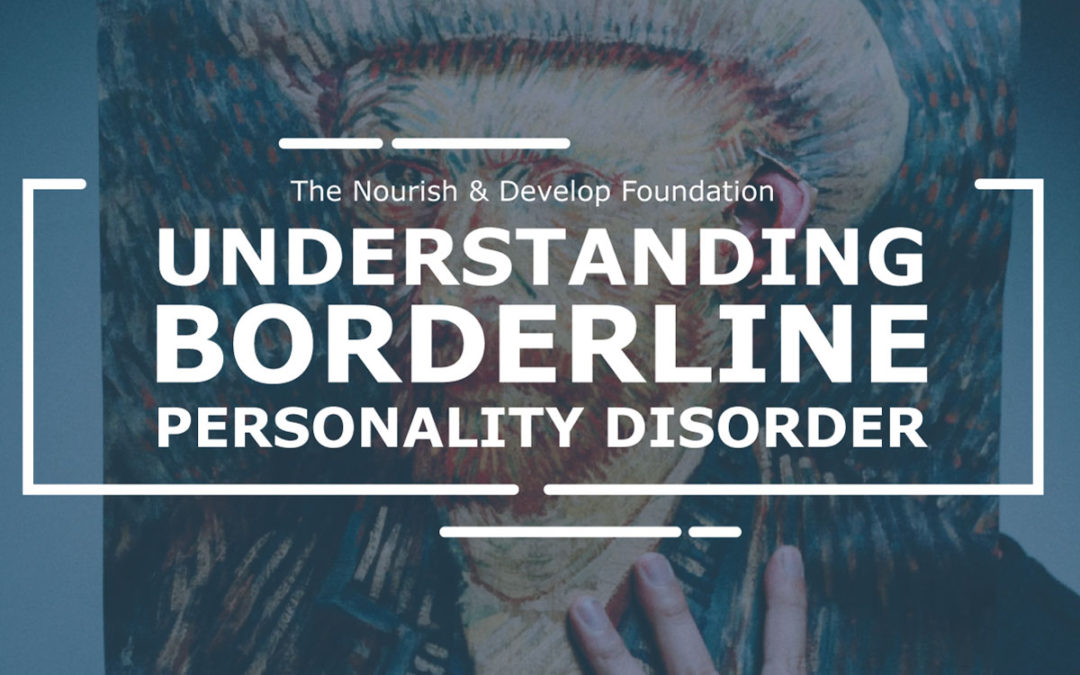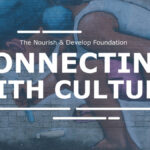We are passionate about raising awareness of activities that benefit our mental health
According to the American Psychiatric Association’s Diagnostic and Statistical Manual of Mental Disorders (DSM-5),
at least five of the following symptoms must be present to meet a diagnosis of Borderline Personality Disorder:
One might have suicidal thoughts, talk about suicide, or carry out suicide attempts or completion. They might also cause intentional harm to themselves commonly through cutting or burning their skin without purpose of suicide for a number of reasons such as to punish themselves or as an outlet to release strong emotions.
One might not know who they are or what they want in life, causing them to rapidly shift their goals and values (even religions or sexual identities). They can go from being happy with themselves to hating themselves or seeing themselves as a bad person.
One might feel like there is a hole or void inside of them and they can feel like they are ‘nothing’ or ‘nobody’.
(e.g., intense episodic sadness, irritability, or anxiety usually lasting a few hours and only rarely more than a few days)
One might experience extreme mood swings that can be triggered by seemingly little things that others would just brush off.
(e.g., spending, sex, substance abuse, reckless driving, binge eating)
One might engage in sensation seeking behaviours especially when upset that provide pleasure in the moment but have harmful impacts to them or those around them.
One might cut off all communication with someone or cling on to them to keep them close in anticipation of them leaving or ending the relationship.
One might be suspicious of others’ motives or feel out of touch with reality, feeling spaced out or having an out of body experience.
(e.g., frequent displays of temper, constant anger, recurrent physical fights)
One might have a short temper and yell, throw things, or be consumed by rage. The anger can be directed outwards or internally.
One might idealize someone one day and think they are horrible the next. They may also be quick to jump into relationships that become quite serious right away.
Quick Facts
- Borderline Personality Disorder is usually diagnosed in late adolescence/early adulthood, but symptoms can be present earlier in life.
- Borderline Personality Disorder often co-occurs with other mental illness such as depression, anxiety disorders, personality disorders, as well as with eating disorders, and substance abuse.
- Borderline Personality Disorder is associated with higher rates of suicide and self-harming behaviours. Around 10% of people with Borderline Personality Disorder will complete suicide.
- Borderline Personality Disorder is a treatable illness and most people with Borderline Personality Disorder can recover.
- Borderline Personality Disorder diagnoses do not prevent people from being caring compassionate, and successful individuals.
Risk factors
Having a close biological family member such as a parent or sibling with Borderline Personality Disorder may put someone at a higher risk of developing it themselves.
Traumatic life events such as abuse, abandonment, or exposure to volatile relationships or hostile conflict may play a role in developing Borderline Personality Disorder.
Disclaimer: One or all of the above risk factors are not required for development of Borderline Personality Disorder, and though they might increase the risk, having any of the risk factors does not guarantee a diagnosis of Borderline Personality Disorder.
Recommended TREATMENT
Evidence shows psychotherapy is essential for treating Borderline Personality Disorder. Cognitive Behavioural Therapy (CBT) has been proven to be helpful in identifying and changing core beliefs and behaviours that are inaccurate perceptions of oneself or others and Dialectical Behavioural Therapy (DBT) uses concepts of mindfulness and acceptance to direct awareness to one’s current situation and emotional state to get through it without exacerbation and to improve relationships. Finding a professional who is trained in or specializes in CBT and DBT is more beneficial than general therapy.
While there is no medication available to treat Borderline Personality Disorder overall, there are options to restore the chemical balances in the brain and to help reduce some of the symptoms like depression and paranoia in the form of antidepressants (e.g., fluoxetine), antipsychotics (e.g., loxapine), anti-anxiety medications (e.g., lorazepam), and mood stabilizers (e.g., divalproex). A doctor or psychiatrist will prescribe medication if it is an appropriate component of treatment for the individual.
Participating in a treatment plan of psychotherapy and/or medication is important, but there is also homework to be done as well. Identifying triggers, learning about the diagnosis, and trying different coping strategies will better prepare a person for managing future episodes and symptoms. Making a safety plan or developing a list of contacts to reach out to when in crisis are examples of activities that can help oneself.
LIved experience
Healing
Borderline Personality Disorder does not discriminate, it can affect anyone, and it is nothing to be ashamed of. Some celebrities have spoken out about their experiences with Borderline Personality Disorder including comedian Pete Davidson, author Susanna Kaysen, and actress Linsey Godfrey.
Below are some quotes from people with Borderline Personality Disorder who explain what it is like to live with the illness and how they do not let it define them.
“For more than 10 years of my life, I struggled to get well. There were many times when I honestly thought I would never get better—I gave up hope. I became suicidal. I seriously attempted suicide nine times. These serious-yet-impulsive acts were extremely hard on my family. They never knew whether they’d come home to find me dead or alive. This was before mental health professionals learned that BPD is actually a highly treatable mental illness.
During my illness, I suffered from typical BPD symptoms. I had great difficulty regulating my emotions, especially in relationships with others. I was very impulsive and self-destructive. I engaged in self-injury, cutting or burning my skin to get a sense of relief from emotional pain. I had uncontrollable bouts of rage aimed at either myself or others. I lost a lot of friends during this period, and my family didn’t know how to help me, although they tried their best to be emotionally supportive.
I also experienced severe depression and feelings of being completely empty. I felt like a burn victim—my “emotional skin” was so raw that I couldn’t cope with what others would consider the normal, everyday trials and tribulations of life. At times, I didn’t know who the person looking back at me in the mirror really was. I thought I was an evil and despicable person, although I’d never committed a crime, and was, by many accounts, a caring, thoughtful and highly sensitive person.
There were times I dissociated from reality. I felt numb or unable to feel. For prolonged periods of time, everything around me looked and felt fake. I remember a day when the multi-coloured fall leaves blowing by looked like plastic—nature was ugly and lacked any meaning or beauty. I felt as if I was living in a doll house where nothing around me was real.
At other times, I heard voices in my head telling me over and over again: “You are worthless, you are worthless, you are worthless…”
In the last four years I have found true health and well-being. I now have a sense of peace in my mind, gained through a combination of psychiatric medications that work for me (I cannot go without them), learning dialectical behavioural techniques to handle my emotions, furthering my college education, and engaging in meaningful activities. I am doing wonderfully!
…I am no longer my illness. I am a daughter, a sister, a team member, a facilitator, an artist, a public speaker, a volunteer, a passionate person, a caring person, a nature lover (I see beauty again!), an animal lover, an advocate, a spiritual person, an avid novel reader, a bell collector, a person who knows myself well…I am Elizabeth Charlotte Bogod.”
Source: https://www.heretohelp.bc.ca/visions/borderline-personality-disorder-vol7/dont-call-me-borderline
Not a Choice
“The best way I have heard borderline personality disorder described is having been born without an emotional skin, no barrier to ward off real or perceived emotional assaults. What might have been a trivial slight to others was for me an emotional catastrophe, and what would be a headache in emotional terms for someone else was a brain tumor for me. This reaction was spontaneous and not something I chose. In the same way, the rage that is often one of the hallmarks of borderline personality disorder, and that seems way out of proportion to what is going on, is not just a “temper tantrum” or a “demand for attention.” For me, it was a reaction to being overwhelmed by present pain that reminded me of the past. (Williams, 1998)”
Hope
“I love my life and have been quite privileged. I have also struggled with different mental illnesses for almost a decade. I was diagnosed with bulimia at 18 and had my first suicide attempt just before my 23rd birthday. It was just after this that I received my diagnosis of borderline personality disorder (BPD) and was able to seek treatment and support.
It was actually quite a relief for me and my family to be able to put a name to what I was experiencing and to learn my triggers. While the symptoms of borderline personality disorder can be quite diverse, for me it was an irrational and impulsive response to different situations. I was very black and white. One minute I could be totally fine then something would trigger me into a complete suicidal episode and a 24-hour downward spiral. BPD generally also is a co-morbid self harm type illness. In my case it was an eating disorder – a sort of combination of anorexia and bulimia.
I’ve felt the stigma and discomfort around mental illness both in the workplace and in my personal life. There have been times I’ve had to take sick days for mental illness issues and it hasn’t been viewed as a proper sick day. I’ve also been excluded from certain social situations. I had quite a large group of friends and was sometimes not invited to things because I might have an episode. I’ve also isolated myself from events when I’ve known people would be there who have certain views on mental illness. So I’ve felt quite alienated at times.
I don’t blame anyone, as it’s such unfamiliar territory. People can identify with a broken arm, because they can see it. They can’t see mental illness so they can’t sympathise with it. They can’t comprehend the way your mind can change itself into thinking such deep and dark thoughts.
I feel there just isn’t enough accessible education around mental illness. There’s a lot of information about it, but you have to look for it. It hasn’t been as saturated in mass media the way other illnesses with the same statistics are.
Supporting someone with a mental illness is definitely challenging. Your family and closest friends feel they should be able to support and love you no matter what, but you really test that. My loved ones have been amazing and I am so grateful. My partner has been incredibly patient with me and he’s taken the time to learn my triggers. He’ll hide under the blankets with me until I’ve calmed down. He knows not to say anything. He knows just to be there.
People might say they support mental illness, but most don’t want to talk about it. Being part of a community who have had similar struggles can be a big help. Mental illness is not a convenient thing – it’s not 9 to 5, Monday to Friday. So it’s really important to have somewhere to go any time of day, such as the online SANE forums. Reading about others’ experiences or having someone empathise with your own can give a lot of hope during your darkest moments. -Stephanie”
Source: https://www.sane.org/information-stories/people-like-us/stephanie
Room for Growth
Though having diagnostic criteria is helpful for obtaining appropriate treatment, it is not perfect. As research progresses, there may be new symptoms to be included, and more treatments available. Some people diagnosed with Borderline Personality Disorder are not fond of the term ‘borderline’ as it once referred to the borderline between psychosis and neurosis, which does not accurately describe the illness. Unfitting labels can further stigmatize and prejudice Borderline Personality Disorder, causing more harm than help. Some preferred alternatives reflect the difficulty of self-regulation like ‘Emotional Processing Disorder’ ‘Emotion Dysregulation’ and ‘Emotional Impulsivity Disorder’. Through involving people with lived experience in discussions, research, and treatment, future generations can benefit.
Resources
Ontario Shores BPD self-regulation clinic
Supporting a loved one with BPD
Talking with your doctor if you think you might have BPD
Sources:
https://www.ncbi.nlm.nih.gov/pmc/articles/PMC3494330/
https://www.camh.ca/-/media/files/guides-and-publications/borderline-guide-en.pdf
https://www.helpguide.org/articles/mental-disorders/borderline-personality-disorder.htm



